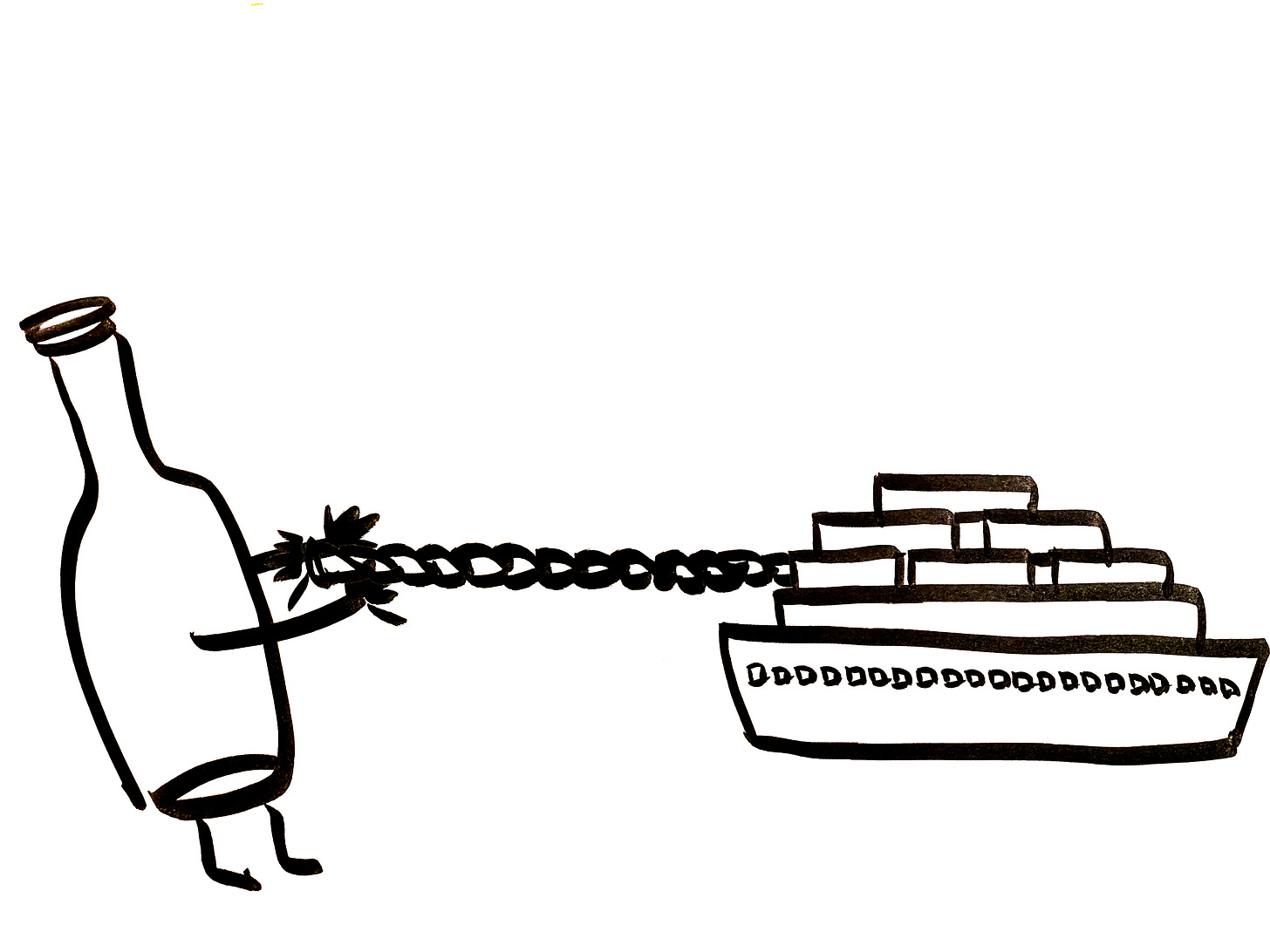Concerning the Global Shipping Crisis
Crisis management begins with communications management
Having wine and spirit inventory issues? Join the club.
If your customers haven’t yet given you an earful, consider yourself lucky. Andrew Adams for WineBusiness.com reports that “currently 60% to 65% of all the world’s cargo ships are running nearly a week late on average.” That’s on average; many are experiencing even greater delays.
And delays are just the beginning. Any margins that might’ve been gained from the recent suspension of tariffs are being absorbed by higher shipping costs. Paul Page of The Wall Street Journal writes “the average price world-wide to ship a 40-foot container has more than quadrupled from a year ago, to $8,399 as of July 1, according to a global pricing index by London-based Drewry Shipping Consultants Ltd.”
First, it was tariffs, then the pandemic, and now it’s shipping disruptions.1 It’s like the misattributed Arnold J. Toynbee “quote” about history: it is just one damned thing after another.
Here’s the secret: it’s always something. There’s never been a golden age. Before those crises, there was the Great Recession. Oh, and Euro peaking at $1.60.
To convince ourselves that after this one “last” problem is solved all will be well is to leave our colleagues poorly equipped to manage expectations.
To stick our heads in the sand defiantly ignores the challenges of our business. Failing to share the full state of affairs unnecessarily courts risk in the form of an ill-informed sales team.
What we are now experiencing is a crisis not just of containers but of communications.
If all your company is sharing is when the next container of a particular item will land, the problem is not being addressed. Be concerned any time long-term planning is replaced by short-term goals (as opposed to being aided by them).
The end of this “crisis” isn’t anticipated for, at least, another six months. What are you and your company staking your reputations on between now and then? I hope it isn’t that container that just left Le Havre.
To take up the gauntlet, companies must share the answers to these questions with their stakeholders:2
What is the long-term plan? Will more inventory help smooth over future logistical bumps? If your company normally keeps 3-months inventory in stock, is it prepared to take 4 months’ worth instead? Or is the lead time for orders being increased? What is being done to avoid this issue in the future?
What are the short-term fixes? If you run out of New Zealand Sauvignon Blanc and everyone starts pushing Chilean Sauvignon Blanc (which the company did not adequately stock for this contingency), then you’ve just traded one problem for another. Don’t let shortages spiral for lack of planning. How is inventory being allocated?
Does everyone know the plan? The proposed solutions to the problems being faced should not be addressed one-on-one; this is not the time for a person in logistics or purchasing to have a single conversation with a solitary sales rep. This is all hands on deck. Address the issue at a general meeting. Everyone needs to know—from customer service to sales managers to the person running social media—so that no one is guessing or inadvertently undermining short-term fixes or long-term plans.
What tools are employees being afforded to improve the situations with their customers or colleagues? Whether you’re a salesperson or portfolio manager, you can’t fairly be expected to constantly perform at an optimal level in the face of suboptimal conditions. In light of delays, can delivery fees or minimums be waived under certain circumstances? Can commission structures be temporarily adjusted to account for the outage of certain staples (and reinforce the short-term fixes)?
How are employees, colleagues, and partner companies being shown gratitude in light of the circumstances? Nobody planned this and everyone is, hopefully, trying their best. Catch them in the act and thank them.
If you want to further brush up on the general history of how we got here, check out “How the World Ran Out of Everything” by Peter S. Goodman and Niraj Chokshi. For details on the current logistical nightmare for wine and spirits, read “Mess on the High Seas: That Imported Wine You Want Might Be Stuck on a Boat” by Collin Dreizen. Freight forwarder Hillebrand also some very thorough posts and videos.
Note that most of these questions could be asked in light of any crisis. They are every bit as applicable when talking tariffs or a weak dollar.

